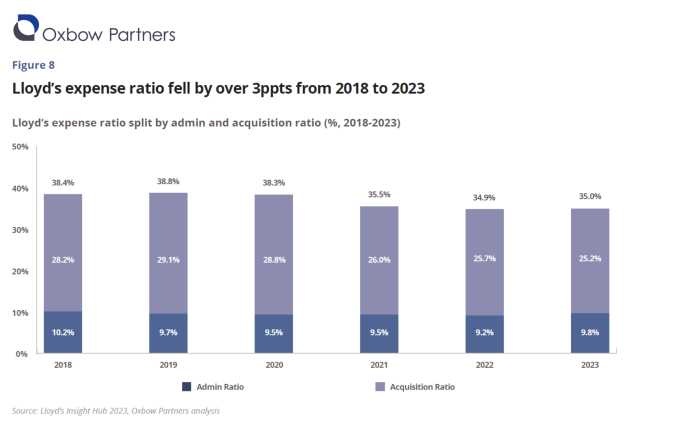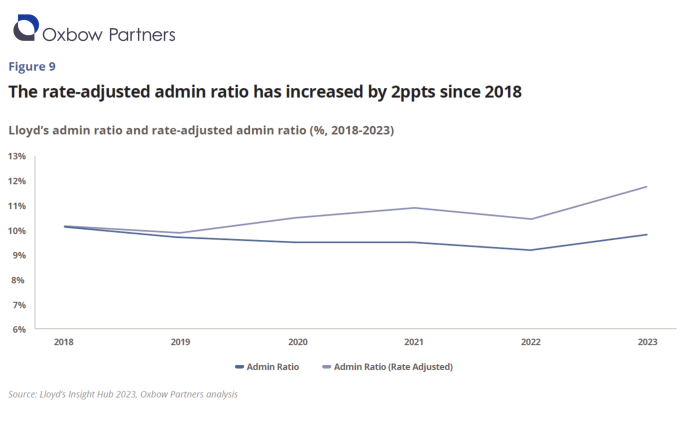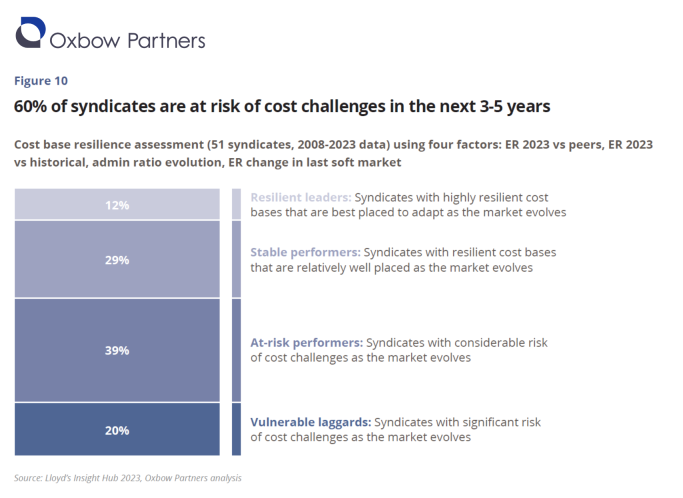Achieve an efficient cost base and embed transformation discipline
20 February, 2025
In October we published our annual Lloyd’s and London Market CEO Agenda for 2025 – “Leading through uncertainty”. We look at the current market conditions and set out six transformation topics that we believe CEOs should address in 2025:
6. Achieve an efficient cost base and embed transformation discipline
Historically, the London Market has operated an outsized cost base. In recent years, the expense ratio dropped by over 3ppts (from 38.4% in 2018 to 35.0% in 2023). However, this was predominantly due to GWP growth rather than a decrease in absolute expenses and the admin ratio component (i.e. expense ratio excluding acquisition costs) has remained largely flat (10.2% in 2018 versus 9.8% in 2023).
Indeed, our analysis suggests that stripping out rate rises in recent years, the admin ratio has actually increased, reaching nearly 12% in 2023. This might seem insignificant during a hard market but will likely come into sharp focus as the market changes.
To that end, we analysed admin expense ratios across the market to ascertain which syndicates likely have more resilient expense bases than others. Nearly 60% of syndicates appear at risk over the next 3 to 5 years. In contrast, only 12% of syndicates appear well placed.
However, it is not all bad news. The changing cost base was caused partly by investment in people to maximise value in the hard market and large-scale multi-year transformation programmes (e.g., underwriter workbench, pricing, data and artificial intelligence).
Imperatives for 2025
As the market evolves, companies need to identify opportunities for sustainable cost efficiency and reposition transformation roadmaps.
The first step is a thorough review of the business to identify areas of opportunity. This can then be linked to a refreshed transformation portfolio. Critical in this exercise is not to look only for pockets of cost to remove but also to use the financial flexibility provided by the last few underwriting years to rethink the operating model and processes to create a step-change in efficiency.
Finally, we recommend setting up of a Transformation Office to ensure the right degree of discipline and coordination. This typically involves a handful of committed individuals with diversified skillset (e.g., strategy, delivery, PMO, domain expertise, technology) who have a strong mandate from the CEO and sufficient gravitas to drive the change.




